|
The award-winning Jumeirah Himalayas Hotel Shanghai is located inside the Himalayas Center right in the heart of the trading district of China’s most happening city. Easy to get to from both of Shanghai’s two airports’, with around 40 minutes by taxi from Hongqiao Airport, and around 30 minutes from Pudong International Airport, the hotel is also a stone throws away from Huamu Lu metro station at Line 7, which easily connects to Longyang Road metro station on line 2 from where guests can catch the futuristic Maglev train straight to Pudong International Airport. The cubic-shaped 23,000 sq meter Himalayas Centre is a landmark building that combines nature, humanism, and fine architecture. It takes on the form of a jade piece with heavenly inscriptions that breaks forth from the ground. The project consists of not just the Jumeirah Himalayas Hotel Shanghai, but also a fabulous shopping mall. In the 4th quarter of 2012, an art museum and a theatre would also be opened at the location. Jumeirah Group opened its first luxury hotel in China in 2011 and is now present in Dubai, London, Frankfurt, the Maldives, Shanghai, and in Abu Dhabi. The luxury hotel industry in China is growing at an alarming rate. A few things separate the Jumeirah Himalayas Hotel Shanghai from the others in this competitive industry within this part of Shanghai. Hence why the hotel has adopted the concept of ‘STAY DIFFERENT’ to everything they do. One of the things that sets the hotel apart from the others is its lavish lobby and its dramatic ceiling complete with a 260 sqm LED screen, the largest indoor screen in Shanghai which displays various multimedia animation to reflect the four seasons. Every successful hotel manager will tell you that the lobby is their favourite part of the hotel because this is where they can get a true feeling of how well their hotel is doing. Immediately as you enter the lobby, apart from the LED screen roof, the first thing that strikes the visitors eyes is the enormous amount of space in the 16-meter high lobby which contains exactly 1,000 Chinese characters on the pagoda style roof, and some of the finest pieces of art around the whole of Shanghai. When one observes any of these 42 delicate pieces of value, you realise that this hotel lobby is truly the envy for all other luxury hotels to gasp at. The 42 art pieces are a personal collection of the hotel’s owner, Mr. Dai Zhi Kang. The 47-year-old property tycoon, with a personal fortune net worth of $1.2bn is keen in his pursuit of contemporary art. Dai is a collector of modern Chinese art and has an established a museum in his Himalaya Centre to house the collection. Rising from his humble beginnings, firstly as a student at Remin University and later as a Banker, Dai changed course and invested in the booming Chinese property market to eventually become one of the most successful people in modern China. From our brief conversation I got to know that he is also an avid collector of rare ancient scrolls and sculptures. Guests are allowed to borrow a complimentary iPod nano at the lobby, pre-loaded with information in Mandarin and English, and they can listen to all the history and detail of each art piece. The complimentary Lobby Art Tour which is open to the public also explains the Feng Shui elements of the design of the hotel which contains a full sized antique pagoda in carved rosewood. Things such the mirror and the fountain (which bring energy of the feng shui element of water), and the dragon boat made of African Rosewood, are some of the things that are displayed to deliver the good wishes to all the guests for a smooth stay. There is that air of elegance which stays with the Chinese thought of pursing a higher achievement in life. The dragon boat certainly displays that. You are not just exposed to fine art, but effectively you can read a 5,000-year-old story with the ‘Thousand Character Essay’, which each character has a unique meaning, epitomising the ancient art of Chinese calligraphy. It’s a strong fusion of local Shanghainese culture, Arabic influence, and an essence of the pastoral life of the common people of this country that is brought out clearly by the design of the tasteful piece. After all, would you expect anything less from a world-class architect as Arata Isozaki, and interior designers KCA International (from Burj Al Arab fame)? Indeed Jumeirah is about affluence, as well as being different. The latter term is perfectly exemplified when you see a group of Chinese musicians dressed in traditional Arabic wear (burkas and all), and playing Arabic music. It may come across as being a bit odd and eccentric, however that’s the beauty of enjoying Arabic culture in China. Fond memories of my stay at the Jumeirah Emirates Towers came to mind as I presided towards my generously spacious room, which granted priceless views across to this modern part of Pudong district. Though the views may not be as extravagant as those offered by the riverside at the Bund (unless you like to admire the view of the massive yet blandly designed Shanghai exhibition centre, or some of the villas, each costing around US$6 million, located right opposite the hotel), the hotel does offer sheer tranquillity away from the hustle and bustle of the downtown Shanghai. There is an air of traditional Arabic elegance spiced up with Chinese affluence, and this all hides behind the aroma of the hotels furnishings. It may not be easy to see for the guest, however the ethos of the Jumeirah brand is to bring a little bit of the Middle East to wherever they are situated and in Shanghai, and it is no different. I suppose a replica model of the seven star Burj-Al-Arab hotel situated in the lobby blends in well with the surrounding art pieces. Want to feel like Chinese royalty? Each of the 339 rooms and 62 suites are lavishly furnished with jade piece, and Feng Shui elements, and state of the art facilities. The temptation to combine business with pleasure can be just too much when one is offered a contemporary Chinese scholar’s work table complete with all the internet connectively for all kinds of international electronic equipment. Creature comforts that will leave any other hotel drooling with envy include the easy one-step bedside master switch, 42-inch LCD television, and richly thick 600-thread cotton duvets and pillows. As for the bathroom amenities, the hotel has stuck with the unique brand concept of ‘STAY DIFFERENT’. So unlike other hotels where you may just get one of either luxury toiletry brands, at the Jumeirah you get both L’Occitane and Acuqa Di Parma toiletries- all along with a soaking bath, separate rain shower. To top it all up, you’ll be glad to know that the hotel boasts the fastest complimentary internet connection in Shanghai at 60 MB. After a long day in the hustle & bustle of the city of over 19 million, it really is an oasis to escape to where you can just hide yourself in sheer luxury away from the crowds. Its projects such a cosy feeling that it’s almost easy to forget that you are in China. Fans of the Jumeirah brand have not been let down when it comes to providing world-class cuisine. Three of the five dining venues at the hotel provide exquisite authentic cuisine from all around the world. Bringing in world class chefs who may even double as undercover artists because that’s how presentable their dishes are. Indulge your taste buds into ‘Shang High’, provides an authentic Shanghainese dining experience, while J MIX projects the finest Japanese dishes, and Grill Room is for those with a western penchant. The hotel does not fail to be different in this department because very few luxury hotels in Shanghai offer a true Shanghainese cuisine, instead opting to go for either Cantonese or Sichuanese dishes. It saves the guest time for drifting down the tedious and narrow lanes of Shanghai to find true authentic Shangahinese cuisine. The Jumeirah Himalaya Shanghai excels in providing the best of what people really want in Shanghai, and that is either Shanghainese or Japanese cuisine. The heights of glory don’t just rest there. This hotel is more than your average five-star lay over. There are snippets of the Jumeirah that make you feel that you have come to somewhere magical, and the ethos displays exactly that. It will keep you wondering if it’s real or just a fantasy. Shang-High RestaurantAfter months of talking about it, finally it has come time for me to relocate back to Guangzhou, the capital city of Guangdong Province in Southern China. Guangzhou has a special place in my heart because I lived there for a few years when I first came to China in 2003. I have enjoyed living and working in Suzhou for the past 11 months (excluding the 2 months in Shanghai).
Suzhou is technically split into two parts- the historic Suzhou, and the Suzhou Singapore Industrial Park (SIP). The old Suzhou is still very much a tourist town with all the historic gardens and canals. Whereas Suzhou SIP is more of an expat haven that feels like being in an affluent part of the U.K. or the U.S.A.. In the SIP area there are famous International schools such as Dulwich College Suzhou, and there are MANY expat shops, restaurants, and bars selling imported European and American food. Suzhou SIP itself is perhaps the most beautiful, cleanest, and spacious city I have been in China. Prior to my arrival in Suzhou, my impression of this city was somewhat limited to one that most non-residents have, and that is of an ancient and historic Suzhou with period architecture and lush greenery blended in with canals (hence why it's known as the Venice of the East). I never imagined that one day I would be living the life of an expat in this city. It is quite a privilege to be able to witness the beauty of Suzhou as a 2nd tier city, and also how rapidly it’s growing, both economically, and geographically. I have really enjoyed living here, and I am going to miss it a lot. It really is a fantastic place to live in. In the SIP area, you can go to Jinji Lake, Times Square, and around Ling Long Wan to do shopping and eat delicious Korean and Japanese food. Suzhou has a large Japanese and Korean expat community. Then there is an assortment of Americans, British, French, Spanish and other European nationalities, Indians, and of course, Singaporeans. In fact Suzhou is not as expensive as, say for example, Shanghai, Shenzhen, or Beijing, but it is more expensive than most 2nd tier cities such as Guangzhou, Hangzhou, Ningbo, and Tianjin. For example, the house prices in Suzhou vary from around 1300RMB a month for a 45 Sqm 1 bedroom home (in downtown old Suzhou), to 35,000RMB a month for a 150 Sqm 4 bedroom home (Suzhou SIP area). I live in the SIP area, quite close to Kunshan and so the house prices in this area are competitive for the expat luxury market. It may be frustrating sometimes that the roads in Suzhou SIP are EMPTY 90% of the time, where the streets in downtown Suzhou are BUSY 90 of the time! That's the remarkable beauty of this amazing. There are also two railway stations- One in the SIP area (more modern but quiet and empty), and the main Suzhou station (Very BUSY). Overall, Suzhou SIP feels like a ghost town because the roads are all empty 24 hours a day (photos below)! Having lived and worked here, I also feel that the people of Suzhou are more oriented towards their career and are more serious on maintaining a long term job security than people, in say, Shenzhen (where most of the people are migrants). So, with a very heavy heart I say goodbye to Suzhou. On the other hand I am very much looking forward to relocating back to Guangzhou (I used to live in Panyu for over 2 years before coming to Suzhou and Shanghai). Here I have included some images of life in Suzhou. There is a good mix of the old and new Suzhou. Amidst the sad feeling of missing good friends, and my home for the past 11 months it's time to face the facts and move on in life. That's the way the stone rolls. The rock tumbles...the cookie crumbles. Ciao Ciao Suzhou. :-( Famed for being as the backdrop of many foreign and Chinese movies, including the Hollywood hit, ‘Mission Impossible 3’, Zhouzhuang is consistently considered to be the best and the most popular "water town" in China’s eastern region. Located around 35km southeast of the eastern Chinese city of Suzhou, and on the southern shores of the famed Lake Baixian, Zhouzhuang is remarkably tiny compared to other water towns around this part of China, such as Luzhi, Tongli, and Mudu. The town is well noted for its rich culture and the well preserved ancient residential dwellings, many of which still remain in a similar condition to what you may have found if you had come here, say 30 years ago. It is one of the few ancient water towns wehre over 60% of the buildings are the original structures from the Ming (CE 1368-1644), and Qing Dynasties (CE 1644-1911).
With a rich history spanning over 3,000 years, Zhouzhuang is a living example of how people used to live their lives in China well before any of the technologies of modern life that we take for granted these days came into effect. The best way to explore the town is by taking a trip abroad one of the gondolas (costs 100RMB for a 1 hour tour of all the canals). While rowing the gondolas through the narrow canals, the oarsman will be chanting folk Chinese songs which themselves contains stories about the life and culture of this ancient water town. The town originated as a village by the name of Zhenfengli during the period around the Period of the Eastern Zhou (BCE 770-221) Dynasty. It is claimed by historians that the town received its current name in CE 1086 during the Northern Song (CE 960-1127) Dynasty when the village was donated to Zhenfengli's Quanfu Temple by a devout Buddhist by the name of Zhou Digong, who owned this piece of land. Quanfu Temple is a marvel of a temple complete with some original artifacts on display, and it forms a signature part of a tour of Zhouzhuang. Until the early 1980s Zhouzhuang was perfectly hidden away from the world’s eyes. The town was only bought to the world’s attention when an American businessperson who owned an art gallery in New York, visited the town and realized its true gifted potential as a tourist town. The interest in watertown Zhouzhang has sparked interest in other watertowns across China, and in particular, the watertowns of the Suzhou area. Since the 12th century, Zhouzhuang has been connected to the Grand Canal, which extends from Hangzhou in the south to Beijing in the north. In terms of food, the town has plenty of offerings of fresh fish (from the water), house made rice wine (very sweet tasting), and pork meat (especially pork knuckles!). If you are going from Shanghai or from Suzhou then you need a full day set aside for exploring the whole of the town. The following places of interest are worth paying a visit at Zhouzhuang: Quanfu Temple Strikingly beautiful and located inside Nanhu Garden, Quanfu Temple is a Buddhist place of worship built on the shores of Lake Nanhu. The temple is so large that had to be divided into four parts, which related to the four seasons of the year. The enormous prayer halls of the temple are a delight to be in as it brings out the best of all the different personality faces of Buddha. Light a joss stick and make a wish! Milou Tower The distinctive looking Milou Tower is situated next to Zhenfeng Bridge on the islet in the southwestern part of Zhouzhuang. It is clearly visible as one makes their way to the entrance of the ancient town. Milou Tower was originally a place where actors and writers would gather around to perform or tell stories. Even to this day performances take place at the Milou Tower. Chengxu Taoist Temple Considered to be one of the largest and most famous Taoist temples in the region, Chengxu Taoist Temple is located on Zhongshi Street, just opposite Puqing Bridge. Originally built during the Song Dynasty (CE 960-1279), the temple contains fabulous halls including Sheng ("Sanctity") Hall and Doumu (Goddess Mother of the Great Wagon) Hall, while its pavilions include Yuhuang and Wenchang. Shen Mansion Situated discreetly in the narrow Nanshi Street, Shen Mansion is Zhouzhuang's largest residential building containing over 100 rooms covering an area of over 2,000 square meters. With its beautiful courtyards, each surrounded by living quarters, the mansion is the stuff made out of dreams for any emperor. Take note of the expensive period furniture still on display in the rooms. The Former Residence of Ye Chucang A native of Zhouzhuang, Ye Chucang (1887-1946) was a poet and statesman who made many efforts to reverse the destructive effects of opium abuse and gambling during that period. His residence is made up of five courtyards and three main architectural structures (Zuyin Hall, Ye's private residence; and the Main Hall). The lavish displays of rich furniture and the strong smell of mahogany and oak strongly flavor the air. It provides a glimpse of what life must have been like for the gifted Ye Chucang. How I got to Zhouzhuang I took the coach from Shanghai Railway Station. The journey takes approximately 1 and a half hours, and costs 25RMB one way. There are regular buses throughout the day from Shanghai or from Suzhou (if that’s where you are travelling from. The journey takes around an hour and costs less then 10RMB one way). Zhouzhuang is close to Tongli Village. This article was also published on TheTravelEditor.com Nanxiang is a small town located in Shanghai’s north-western Jiading District that has a fabulous history of over 1,400 years waiting to be soaked up. This old ancient town is the birthplace of the famous xiaolongbao steamed bun, which are well liked throughout the world. It’s definitely worth trying a few of these delicious buns. The town houses the oldest and original shop selling the famous xiaolong mantou, which was established in 1900.
The town is also the home to one of Shanghai’s five most important classical gardens, the Guyi Garden of Nanxiang which is designed in the typical style of a Jiangnan classical garden. The lush greenery and the sleepy willows may provide a respite for escaping from the hustle and bustle of the noisy narrow lanes of Nanxiang. Nevertheless, despite the garden’s external and internal features not making it appear it to be as outstanding as one would hope for, it’s the garden’s historical connection to the city that is more to be cherished. There are plenty of relics on display that have stayed untouched since the Ming Dynasty days, and that’s the part that really makes this place sell like hot cakes. To make the most of the visit to the garden, visitors can rent a small rowboat to take a ride along the bright green algae ridden lake inside for 20RMB (approx. $2.5USD). Just make sure you known how to ride the boat as no one will be there to teach you. The old street in Nanxiang (pronounced ‘Nanxiang lao jie’) is another wonderful sight to experience, and is somewhat similar to what you may come across in other water towns in Jiangsu province such as Mudu, Tongli, and Xitang. Narrow, crowded, the air filled with the rich smell of oily & spicy Chinese cuisine, and the much expected souvenir shops selling everything under the sun from Mao’s portraits to a matchstick box. The highlight of the town is the enormous yet remarkably beautiful Yun Xiang Temple (pronounced Yun Xiang Si). Allow at least half a day to fully experience the sights and smells of this beautiful historical town. The entrance fee for the garden is 12RMB (approx $2USD). How I got there? I took Metro Line 11 from Jiangsu Lu to Nanxiang directly (takes around 40 minutes). Then take a 15 minute walk along Huyi Gong Lu (沪宜公路) to reach Guyi Garden or you can carry on walking straight down Minzhu Jie (民主街) and the garden is located on the left hand of the road. The Nanxiang Yunxiang Temple and Old Street are also on Minzhu Jie around a 5-10 minute walking distance from Guyi Garden. In an energetic and modern city such as Shanghai, it is so easy to forget that only 30 odd years ago the whole place was essentially nothing but similar to any other current 2nd tier city in rural China. Apart from exploring the beehive tourist attractions in the heart of Shanghai, it worthwhile to go out to the suburbs and see what this fascinating city has to offer for those who yearn to set their eyes upon some of the older parts of Shanghai.
Qibao may be the answer that you are looking for. Situated around 11 kilometers on the outskirts of Shanghai city, Qibao is a diminutive historical town that boasts some of the finest street foods around in the country. The water town, covering an area of around 21.3 square kilometers, is also one of the two beautiful and perfectly preserved water towns in Shanghai (the other one being Nanxiang). The town was built in the era of the Northern Song Dynasty (960-1126) and grew into a flourishing commerce district during the Ming (1368-1644) and Qing Dynasties (1644-1911). These days Qibao is not a wealthy area of Shanghai, and has very little to offer in terms of growth. The majority of the residents depend on tourism, food and, various industrial goods. For a carnival of food head down to the celebrated Town Street with it’s electric atmosphere. If you are into exotic Chinese food then give the all popular chou doufu (stinky tofu) a try. The English name of this snack says it all. If this is something that you desire to tuck your taste buds into, then may god bless your heart because after all these years I still cannot get used to the distinguishable foul smell that drifts for at least half a mile away. I despair it (I really do). The worst part of it all is that it gets into your nose and stays there for a very long time. If this is not your appetite then you may like to try ‘pig’s intestine soup’, ‘smoked toads (Xunlanhamo), sugar coated haws on sticks (Tanghulu), or ’cricket meat’ (again, not for my handling). The other local specialty is hong shao rou, "Red Braised Pork" using a combination of ginger, garlic, aromatic spices, chilli peppers, sugar, light and dark soy and sometimes rice wine. Talking of crickets’, the town’s main attraction used to be (and still is to some extent among the elderly) the cricket insect fighting. It’s fairly interesting to witness crickets fighting each other. Some people may consider it a cruel sport, while others compare it to just like humans boxing each other (!).Due to its favorable geographic demographics, and the perfectly fertilized lands, the town residents provide the crickets with ideal living conditions. This enables the crickets to be prepared to provide exciting performances each day during the golden week holidays (May and October). Just behind the swamped lanes of Qibao, you are most likely to come across small neighborhoods where people live with the most basic of everyday amenities and in cramped conditions. While this may seem like to be the unfortunate side of Qibao, but in fact the people who live here do so in complete harmony and with happiness. It gives an idea of what life must have been like in most parts of Shanghai before all the sheer economic boom happened in Pudong and Puxi districts. So if you are living are living in your comfortable Ritz Carlton suite in the ivory towers of Pudong, try taking a tour of this part of town and then that will sure make you feel how lucky you are. Despite the dizzying pace at which the Chinese economy is growing at, there is still an enormous gap between the filthy rich and the unimaginable poor, and Shanghai is a city that clearly display this phenomena. If anything, then it’s definitely an eye opener. Qibao is located within a comfortable 5-minute walk from Shanghai’s Qibao metro station (Line 9). There are clear directions on how to get to the ancient town. If you get lost then ask anyone for ‘Qibao Lao Jie’ (pronounced ‘Chee Bao Lao Jie’). With a rich history of over 2,000 years, Guangfu is a tiny ancient water town lying 22 km west of the eastern Chinese city of Suzhou. The town falls on the shores of Taihu Lake, the 3rd largest natural lake in China. In the Datong period of the Southern Liang Dynasty, the powerful ruling Gu family abandoned their residence and built the Guangfu Temple. They then renamed the town "Guangfu" in their honour. Various ranges of luxuriant hills surround the town.
In Guangfu Town, tourists can visit the Guangfu Temple and the Guangfu Tower (known as the Guangfu Pagoda). The cost to visit the Guangfu Temple is 12RMB, and this gives the visitor entrance to the tower as well. The tower offers splendid views across to the town, and the lake. The rest of the view in the horizon is somewhat obscured by the hills. Dengwei hill is situated south of the town has been covered with plum trees since the Western Han Dynasty (206 B.C.-25). In late winter and early spring, plum blossoms end up transforming the slopes into a sea of flowers, which is the famous "sea of fragrant snow." Located around a 20 minute bus ride (take bus number 64 from Guangfu town just outside the temple) is the magnificent Qionglong Mountain (pronounced: Qionglong Shan). The mountain is excellent for hiking and has numerous trails which would quite easily allow you to explore around a whole day to explore. This mountain has a cultural significance because one of China’s most influential emperors, Qianlong, is said to have climbed the mountain on all six of his trips to this part of China. The story says that on one of his trips the emperor fell to his knees to worship the spirit of his father and from where his knees fell, two separate springs arose. That very spot is still there today known as the ‘Knees spring’. To get to the peak of the mountain takes around an hour and a half- though can be quicker if you can do it. There are two beautiful temples on the peaks. The one with the most significance is Shangzhen Temple, and it’s quite spectacular in size too. You may find a few surprises there, as I did on my trip. How to get to Guangfu, and Qionglongshan? From downtown Suzhou you can take bus number 2 to Mudu (or the metro line 1 to Mudu), and then take bus number 64 or 63 from Mudu to Guangfu (cost is around 3 or 4 RMB per person). The journey from downtown Suzhou to Mudu takes around an hour, and about a similar amount of time from Mudu to Guangfu. If you want to go to Qionglong Mountain, the it’s probably best to take bus number 64 as that bus stops right outside Qionglong Mountain, and then continues to Guangfu (and Mudu if you are going towards downtown Suzhou). You can also take a taxi from downtown Suzhou to Guangfu (costs around 100RMB), and to Qionglongshan (costs around 80RMB) . Mudu is a tiny ancient water town located on the shores of Taihu Lake to the southwest of the eastern Chinese city of Suzhou (Jiangsu Province). This water town differentiates itself from other water towns by being surrounded by hills and, beautiful natural scenery. Though the town of Mudu itself is a reminder of what China may have looked like, say 30 or 40 year ago, the actual ancient part of the town is the place to explore. Covering an area of around 35 square kilometres and with a rich history stretching more than 2,500 years, Mudu has witnessed the rise and fall of many Chinese emperors.
Much to the surprise to visitors, the entrance to the ancient town of Mudu is adorned with a myriad of KTV bars and restaurants selling local fanfare. As one walks through the piles of fruit skins that have been carelessly thrown by local vendors on the same paths on which previous Chinese emperors have walked on, you realise that Mudu is most definitely different from all the other water towns that you may have come across. Among the things to see of interest to the world traveller would be The Hongyin Mountain Villa. It’s is a famous private garden dating back to the reign of Qianlong in the Qing Dynasty. The beauty of its rockeries, brooks, and the splendours of its nature (trees, plants etc), pavilions, and pond for surpass other gardens. The key point to mention is that the Emperor Qianlong had been to the Hongyin Mountain Villa six times during his six visits to the south of the Yangtze river. At this spot he landed from the boat, toured the garden and saw the performance of the plays. An escort of Qing officials including Liu Yong stayed at the Hongyin Mountain Villa twice, leaving numerous storeys behind. The villa is made up of two Ming gardens: The garden of beautiful wilderness, and the Small hermit garden. By the end of the Qing Dynasty part of the small hermit garden became the residence of the embroidery queen Shen Shou. Then there is the splendid Yanjia Garden which was originally the residence of the famous scholar Shen Deqian in Suzhou during the reign of Emperor Qianlong in Qing Dynasty (1644-1911). It has been reconstructed many times to make sure that it retains its beauty. The town is popular with young people who want to dress up in costume and pay homage to emperor Qing (and his empresses!). Apart from the ancient town of Mudu itself, there is a beautiful hill that one can climb to take in aspiring views of the town and beyond from the peak. The 182 meters high Lingyan Mountain (Spirit Rock Mountain) is situated in the suburban area of Mudu. The journey to the peak, where there beautiful Lingyan Temple is located, takes around an hour. The small path up to the top of the peak is constructed with rocks. Located just behind the temple is a magnificent Duobao pagoda (which was closed at the time of my visit). The path to the top of the hill is made up of numerous bamboo trees (planted, and not natural). The path can be somewhat steep at times so it’s best to wear a strong yet comfortable footwear (business shoes and suit would not suffice as I saw some locals wearing). Leave the Armani gear at home, if you are coming to hike. At the feet of the mountain you’ll be welcomed by a very colourful scene composed of numerous street food vendors selling everything under the sun from freshly cut pineapple slices to stinky tofu (I honestly can’t stand that stuff after all these years in China). Prepare around two hours to see Mudu ancient town, and around three hours to explore the Lingyan Mountain at gentle pace. How did I get to Mudu? I took bus number 2 from downtown Suzhou (just near XinJia Hua Yuan on Xian Dai Dao). The bus stops right outside of Mudu ancient town, at the footsteps of Lingyan Mountain. The journey took around an hour one way from downtown Suzhou to Mudu. Visitors can also comfortably take line 1 metro to the last stop of Mudu, from where a 5-minute taxi would be suffice. Neatly hidden away in tranquil surroundings around 25 kilometres to the east of the Chinese city of Suzhou is the picturesque ancient water town of Luzhi. The town almost falls under the city of Kunshan’s jurisdiction. The small town posses’ absolute beauty on it’s pristine land that will leave you gobsmacked. There are plenty of colours in the air to mesmerize your senses. These include beautiful water canals, elegant stone bridges, and some real edible treats that will take you into a fascinating world away from the hustle and bustle from the big cities such as Shanghai. A massive imperial style gate adorns the entrance of the ancient water town. From here onwards, you are effectively walking on the same tiles on which emperors strolled 1400 years ago. It takes around a 5-minute walk to the narrow lanes of the town. As you begin to absorb the sights and smells of the water town, it becomes evident that this is not going to be any ordinary water town. There is an abundance of action packed activities that will keep you busy. Try riding a boat in the canals, or eating one of the many delicacies. Apart from the beautiful canals, the food, and the narrow lanes, Luzhi is also renowned for housing the ‘Statue of Arahats’ in the Baosheng Temple that was build in 503BC. The temple originally had 18 statues of arahats (Buddhists saints), however in 1928, 9 statues were ruined when the main hall collapsed. The surviving nine statues are well preserved and posses an outstanding artistic value. The wall behind them is carved in the shape of rocky islands. The forms are steep, severe, and the arahats sit upright placed asymmetrically among this backdrop as if part of a 3D landscape painting. The sculptor has adopted the techniques of exaggeration and contrast to create a unity of appearance expression and thought for each figure. The result is highly appealing and testifies to the superb sculpture skill of the tang dynasty sculptor Yang Huizhi. Then there is also the fabulous Shenzhai Residence. This is the former residence of Mr. Shen Baihun, a member of the Chinese Revolutionary League, and an educationalist from Luzhi. The residence features original furniture and his original office for doing business. The total area covers more than 3500 square meters, and the reconstructed part that has been open to the public covers an area of around 1000 square meters. Shen came from an affluent family who owned a lot of real estate at the end of the Qing dynasty. The residence is composed of gateway, ceremony hall, main hall, study, wing rooms, and other rooms/halls featuring elegant structure, simple decoration, and delicate carvings. It was a typical Suzhou style architecture of the Qing dynasty. Many movies and plays have found their place here. Film production companies regularly use the setting as a backdrop for period movies and television serials. In 1998, Luzhi township people’s government reconstructed part of the residence and put the ‘Village Women Garment Show; It is a scenic spot full of characteristics south of the Yangtze River. In between the canals and narrow lanes lies memorial hall to the great writer Wang Tao. Born into a family of scholars in Luzhi Town, Wang Tao was a famous Chinese thinker and poet. Invited by a British preacher, he went to Shanghai Muohi Press in 1849, where he was engaged in translation and edit for about 13 years. Later he became a criminal who was wanted by the Qing Government because he was writing letters to the Taiping Army. In 1862 he escaped from Shanghai to commence what would become a 23 year old exile. During those exile years, he helped a few influential people with translation of four books and five classics into English from Chinese, like for example the president of the Yinghua Press in Hong Kong. Between 1867 and 1869 he travelled to Europe and it was the first time that a Chinese intellectual had ever surveyed Europe in sheer detail. After arriving back to Hong Kong, in 1874 he became the editor in chief of the ‘Circulation Daily’, where he reformed for a better understanding of the western culture and encouraged his readers to open up their mindset towards Europe. In 1884, after being approved by Li Hong Zhang, Wang Tao was allowed to finally return back to Shanghai. In the years ahead in Shanghai, Wang Tao actively supported the revolutionary activities of Sun Zhongshan and Kang Youwei. He died peacefully in his Shanghai home in 1897. His body was buried in Luzhi, his birthplace and hometown. In recognition of his patriotic contributions, the Luzhi People’s Government established a memorial hall built in his memory. Covering an area of around 800 square meters this wonderful Qing Dynasty architecture building consists of Taoyuan Garden, Wang Tao’s Memorial hall and various beautiful gardens. The memorial hall was designed by the famous Chinese artist, Qian Juntao. You really need around half a day to follow absorb the complete atmosphere of Luzhi. Lying in a corner of the town is the original site of the famous Wansheng Rice Firm. Built in the 1910s, Wansheng Rice Firm is located at Nanshishao of Luzhi Township. It was run by two rich businessmen called Shen and Fan respectively. Being a large scale firm, it had about 100 warehouses for storing rice and finally ended up becoming a rice distribution centre for Luzhi and 10 other towns around Luzhi. Ye Shengtao, a famous author and educationalist taught in Luzhou for about 5 years since 1917. His inspiration for many of his works, including ‘Over Collecting 3-5 Dou’, came from the Wansheng Rice Firm. The firm became very well known throughout China, especially as the Wansheng Rice Firm was mentioned in his school textbooks. The town's most distinguished features are its many old-fashioned stone bridges, which were built in the Song, Yuan, Ming and Qing Dynasties. Owing to that, Luzhi deserves its reputation as a 'Museum of Chinese Ancient Bridges.' At one time, there were 72 bridges in the tiny town; 41 still exist and are well preserved 9they are safe to walk on!). How I got to Luzhi I took a regular bus from Suzhou north coach station (next to Suzhou Railway Station). The one hour journey costs 9 RMB one way. Visitors can also take a local bus no. 518 that goes from Suzhou railway station and takes around one hour. Route 518 is great if you want to also go to visit the other sites in Suzhou as the bus goes right through the middle of downtown and then onwards towards Suzhou SIP (Singapore Industrial Park) before heading to Luzhi. There are a lot of beautiful water towns located on the shores of the beautiful Taihu Lake around 18 kilometres from downtown Suzhou, which itself is known as the 'Venice of the East'. One of the oldest and perhaps the most beautiful water towns, Tongli ancient water town covers an area of around 24 square miles, and has a population of just under 34 thousand people. The majority of the residents earn their living from the tourism industry.
Originally named Fushi, Tongli is a preserved ancient water town with a history of over 1000 years. The town is surrounded by water, and has the following lakes inside its area: Tongli Lake, Jiuli Lake, Yeze Lake, Nanxing Lake, and Pengshan Lake. Tongli town is juxtapositioned next to a small island, Luoxing Zhou that hosts a beautiful temple hosing various Buddhism, Taoism, and Confucianism artefacts. Its scenery is very beautiful. During the Spring Festival, people will go to there to strike the bell to pray. A ferry on request can be taken from the main Tongli pier to the Luoxing Zhou. The trip only takes around 5 minutes. The most beautiful feature of the town are its bridges - all 55 of them in fact. Out of these, the most famous are the three bridges of Taiping, Jili, and the Changqing Bridge. They all represent a certain amount of blessing for human life. Chinese people believe that it’s best to go and take a small walk on the bridges when getting married, the birth of a child, celebrating a birthday. This rather simple yet powerful ritual offers people the chance to pray for a good health, and they believe that it gives them happiness. Tongli was also the birthplace and home of the famous Chinese poet, Chen Qubin. His former home is located on Shanyuan Street. Chen Qubin's greatest literacy achievements are embedded in his poems. His home was listed in the Focus Cultural Relic Unit under State Protection for many years. It is a national scenic spot that includes Haoge Hall, Baichi Tower, and Blue Emerald and Green Jade Hall, among other structures. His bedroom and many other features that made up this great man’s daily life are neatly preserved and on display for all to see. As you walk along the narrow lanes of the water town you'll come across an abundance of small shops selling all kinds of local delicious food items. The most famous dishes are (please excuse the direct translation to English from Chinese): "Pork chops served with spices"; Shell fish, Freshwater shrimp in cakes (bright red and boiled shrimps); Roasted horse chestnuts, Three-sliced spring rolls; braised and minced Eel; and the classical dish of all time, Watertown bouillabaisse (this dish is made of a combination of whitefish, weaver fish, mandarin fish and turtle meat). There are plenty of antiques to be bought as well, including ancient Chinese coins, stamps, and various posters related to the Chinese communist party. The beauty of a town like Tongli is that despite the super rich living in the big Chinese cities, it is amazing that here we have a small ancient town where people in the same way that their ancestors lived many hundreds and thousands of years ago. The only slight comfort to them is that they have some basic essentials of modern life such as electricity, gas, internet, mobile phones, and satellite television that allows them to keep in touch with the world. Allow a good 4 to 5 hours to absorb and see experience the whole town. A good advice would be to wear good quality, and comfortable pair of shoes as you'll be doing plenty of walking. How I got there: There are frequent buses from Suzhou Railway Station (or Suzhou North Bus Station) that go to Tongli everyday (at least 7 buses everyday each way). The cost of the 1 hour ride is 9RMB. Visitors can buy a ticket for 80RMB that includes a one-way ticket to the town. When coming back you just pay for the return journey (again 9 RMB). When you get to the Tongli station, you will have to walk for around 10 minutes to the main entrance of the town. When is the best time to visit Tongli: Tongli town is open for tourism purposes all throughout the year, but perhaps the most suitable time to visit is in the spring, autumn and, summer. The winters in Suzhou tend to present bitterly cold weather with a high humidity (i.e. the chilly weather gets into your bones- it can be unpleasant). A few days ago I wrote an article about the lack of public transportation in 2nd tier Chinese cities such as Suzhou. So how do most of the residents in Suzhou travel if they can't get a taxi or bus in time? Well, the majority of residents use an E-bike (Electric bike), or they rent a 'Pay As You Go' bike (explained below), or they have their own car (for which most Chinese people take a loan out from the bank to buy). The former two forms of transportation are becoming increasing popular in China. The country that used to be known as the ‘Cycle Country’ may as well stick to using that title again as these 2 wheeled mechanical beings are favoured by the far majority of the population in order to beat the congested traffic. You may recall my blog article on the demise of the cycle HERE. Well, it appears that the bicycle is making a comeback. Here is some information about the two major forms of pedal transportation: What's an E-bike? Essentially, if I am to put it into non-technical language then an E-bike may be looked at to be nothing but a plastic version of your typical Italian style Vespa scooter. With it’s parts all screwed in, it can easily be dismantled into pieces in case there is a probably. The E-bikes run on 1 or 2 batteries placed underneath the main seat of the bike. On a full battery, an E-bike can run for a maximum speed of around 40kph and for around 15 miles before the battery starts to drain again! Because it takes around 8 to 9 hours to fully charge the batteries so it’s best to have them charged at night-time. Pros of having an E-bike: 1. Flexible to use whenever you want and wherever you want to go (especially in a city like Suzhou where public transportation is lacking). 2. Cheap, no need to pay for fuel! 3. Looks somewhat cool 4. Light, and easy to operate. 5. Can be charged up at prime spots around any city (1RMB to charge an E-bike gives about 20 minutes of charging time). Cons of having an E-bike: 1. Batteries can EASILY be stolen if not chained properly (thieves are more than likely to take your batteries and not your bike!) 2. Wheel locks can EASILY be broken (the smartest of thieves know how to break them!). 3. It’s made of plastic (or cheap steel) so easy to damage and break 4. DANGEROUS: E-bikes are known as the ‘Silent Killers’ because they do not warn pedestrians in advance (seldom use the horn), and at night time they don’t use headlamps (to save battery), and people drive the opposite way. Somehow people also tend to have a strong passive aggressiveness towards others (read = road rage) when they ride E-bikes. 5. Putting in and taking out the batteries every time you charge them is troublesome. 6. In the winter it can be tough to ride an E-bike because the chilling wind will bite into your hands and body (gloves are hopeless) 7. It’s so easy to crash them because of the ‘road rage ’mentality of other riders. 8. The occasional bumps/holes in the roads are the perfect recipe for disaster. 9. You’ll probably end up paying more for things like flat tyres, lights, and other things that will make this plastic bike break up easily. 10. Cannot hire an E-bike, can only buy one! Generally, E-bikes can cost anything from 1,500 RMB to around 3,500RMB. What's a 'Pay As You Go' bicycle? Located at prime spots around the city, these are pedal bikes installed by the local governments to encourage people to use bicycles instead of public transport. Customers have to present their ID card (or passport) at the nearest police station or the government office (contact details can be found displayed on a notice board at every bicycle stand). With a deposit of around 100RMB or 200RMB (depending on the rules of the city), and an initial charge of around 100RMB, customers can hire the bikes for as long as they want. After finishing their ride, customers have to park the bicycle at the nearest available stand (i.e. they cannot take the bike home!). All the bicycles are atomically tracked using a GPS system so they cannot be stolen. These bicycles are safe, flexible, and cheap to use The choice is YOURS! |
Get in Touch:LIFE MATTERSHere I share my thoughts
and experiences during my travels, and how some things have affected my life as an expat and world traveller. Travelling is about capturing that moment in life. Every word, view and opinion on this page is that of Navjot Singh - except where indicated. The most recent is at the top. Scroll down to read the archive. Or search using CTRL+F (COMMAND + F) and enter a keyword to search the page. Just some of the stories you never heard before. The NAVJOT-SINGH.COM web blog is separate to this web site....Click blog, which may not be visible in some countries due to local firewall restrictions, so in those cases this weblog may be read. The weblog also includes some of my press trip reports- most of which are not published on the official blog because of copyright issues. The weblog also contains articles that may be associated directly with a PR trip for a country, airline or a hotel. These are PR reviews done in relations with various companies. If you are an investor or a trend watcher then you may find this website useful as investing has a lot to do with personal observations and finding the ideal trend or next big thing. The average human on the street frequently knows far more about the state of the economy than politicians, university professors, subject matter experts, and financial analysts who seldom travel, or if they do so, only from one hotel to another hotel! The pulse and vibrancy of an economy is nowhere more visible than on a country's streets. All photos and words are © Navjot Singh unless stated. Photos taken by others or by agencies are appropriately copyrighted under the respective name. No photo or word/s may be taken without the prior written permission by the author (i.e. Navjot Singh). All Rights Reserved. Archives
April 2024
Categories
All
|







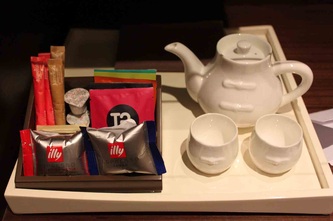

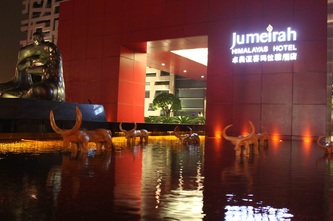














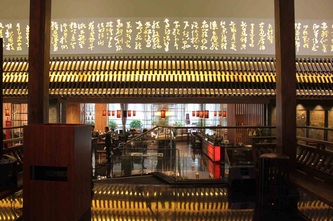



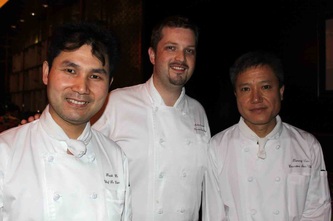

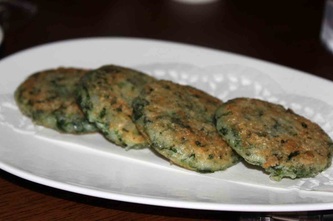



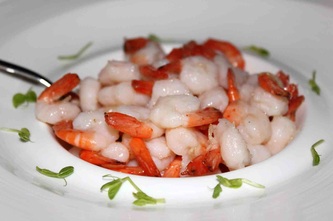


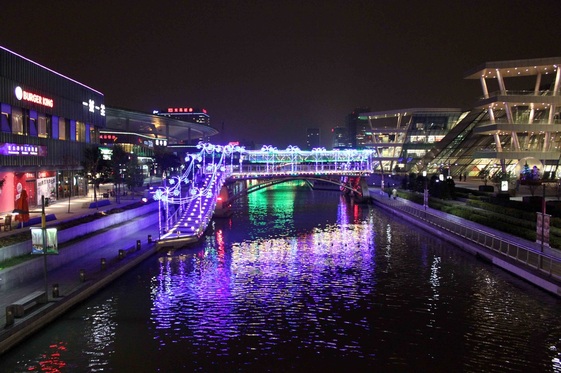



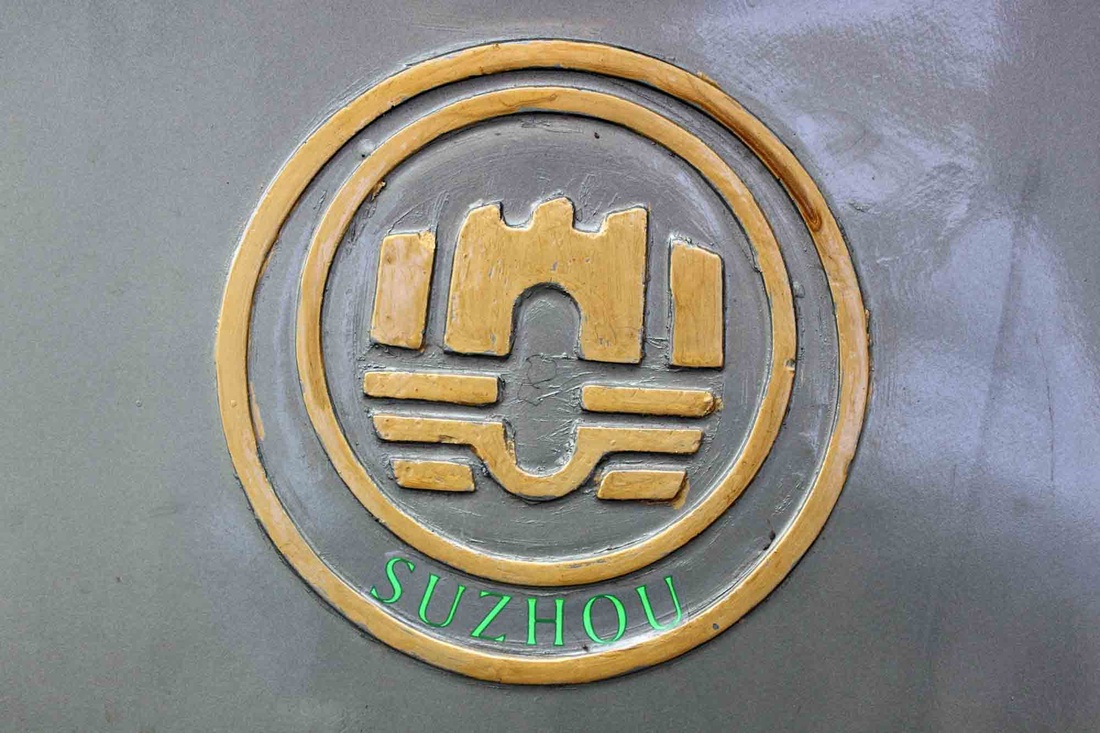
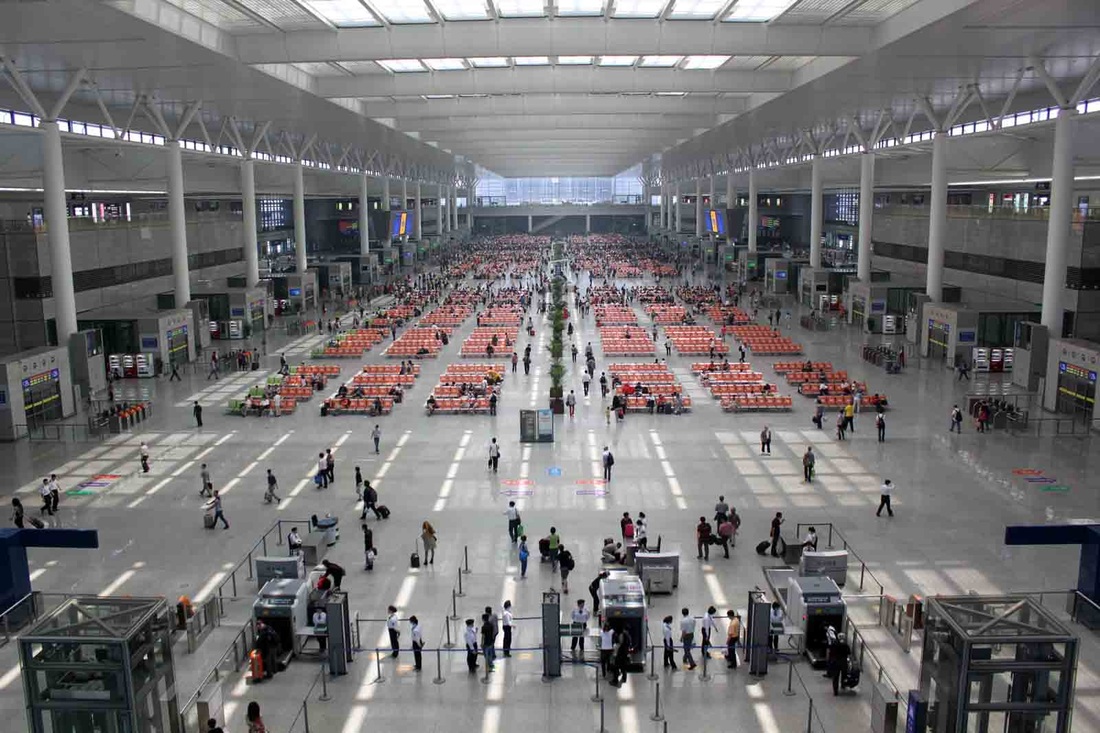




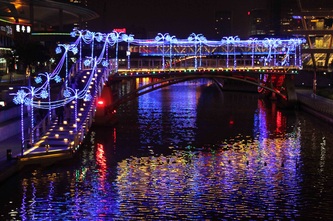







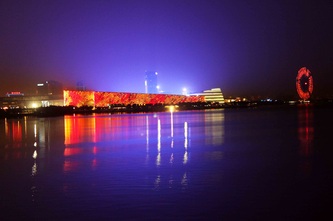





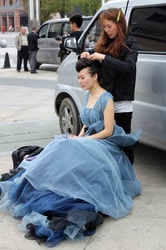

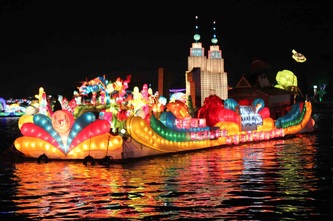

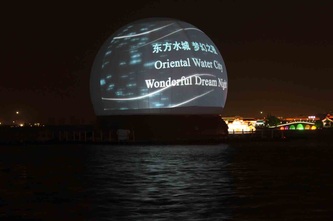


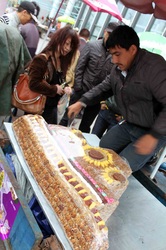


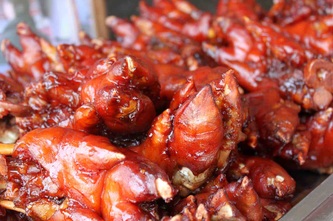

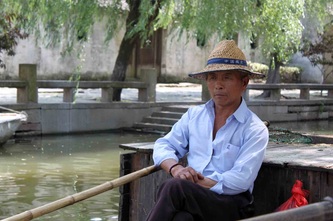



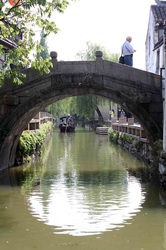



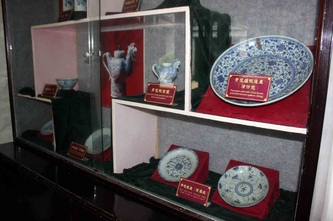
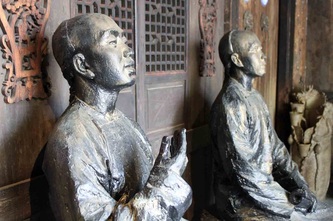







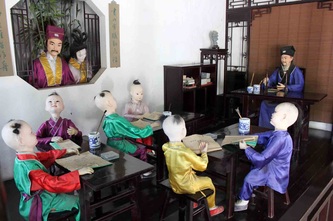








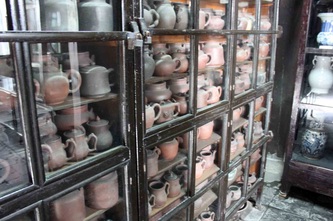

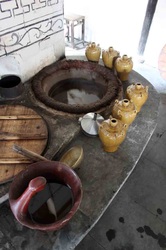

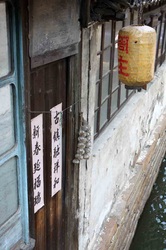





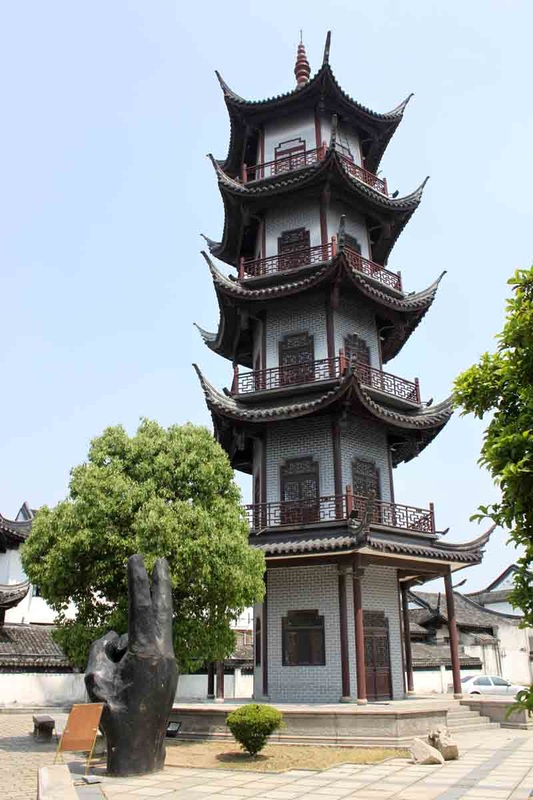











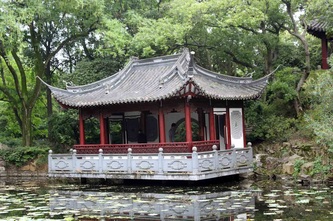


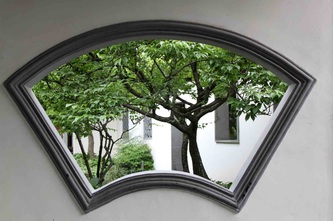



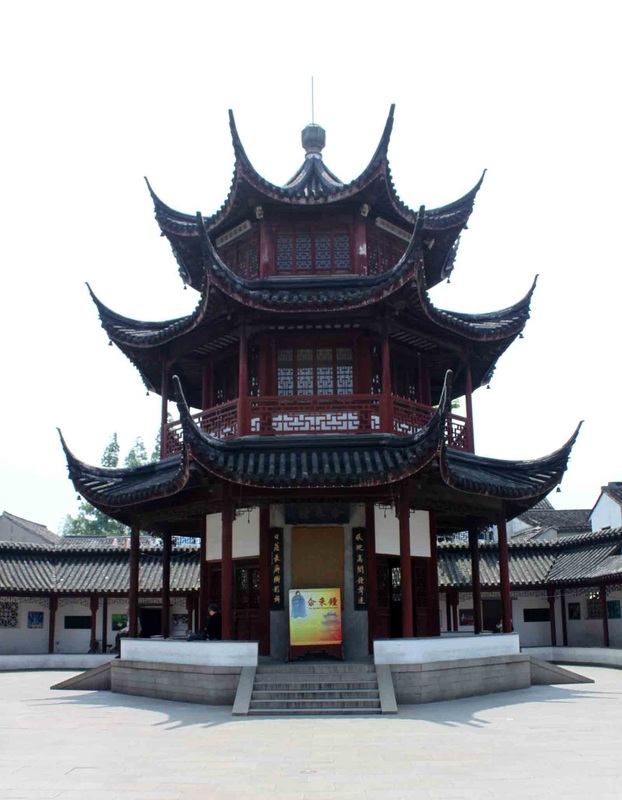



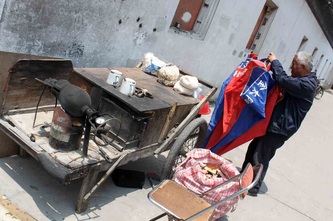
















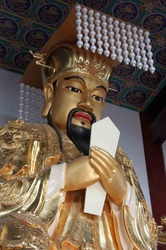





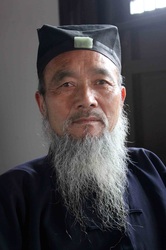

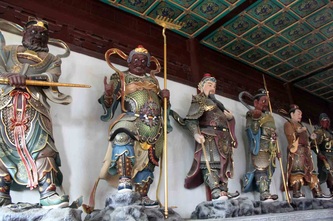




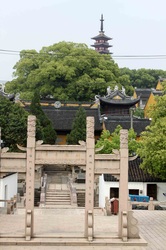




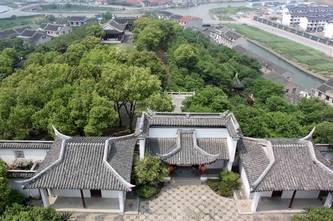



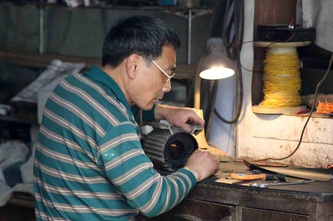
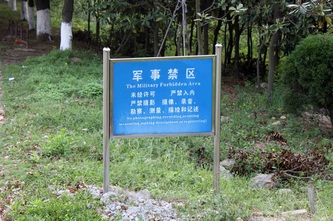







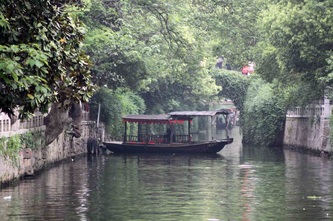
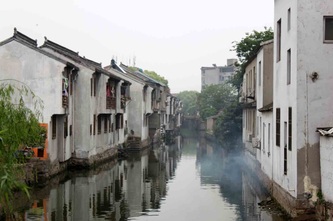
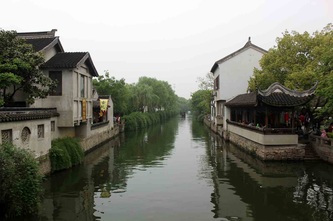













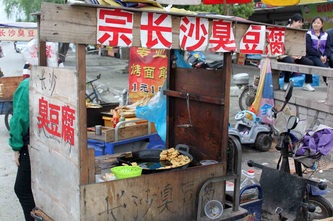



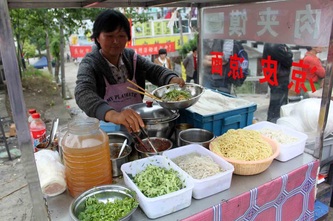
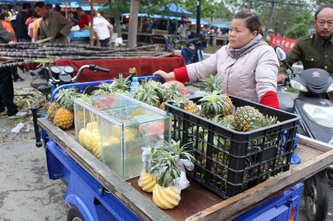


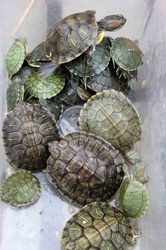
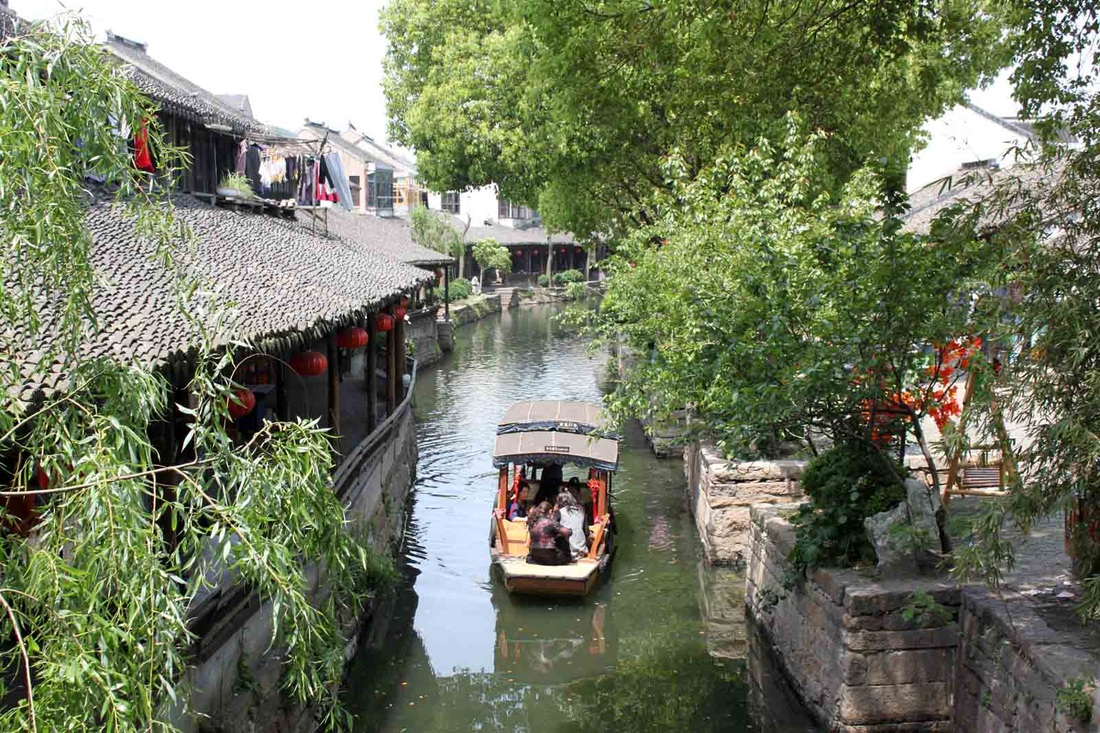




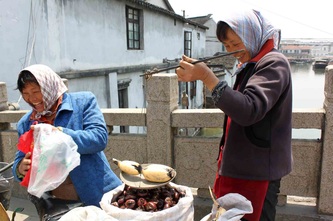


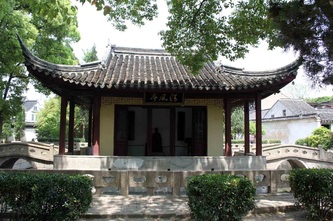
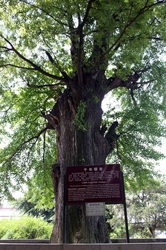






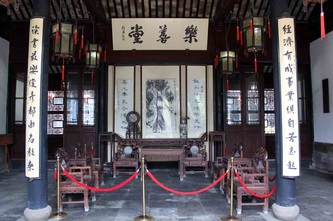

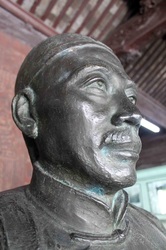


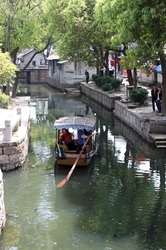



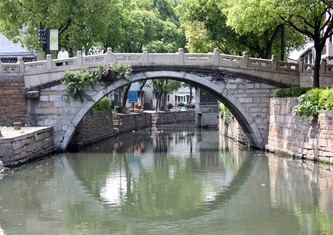

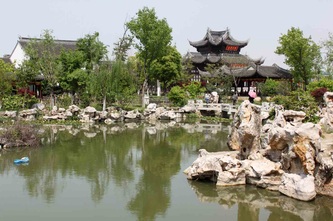



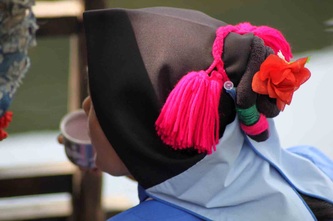





















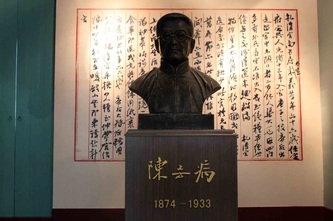
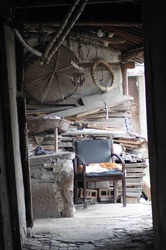

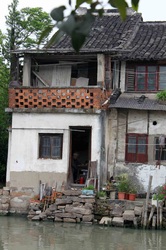



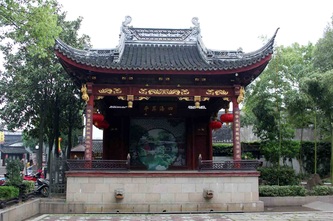
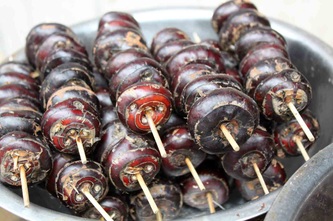
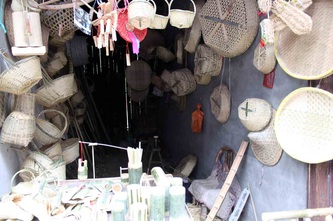
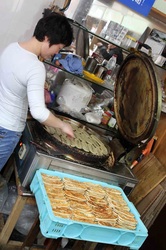













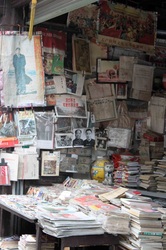

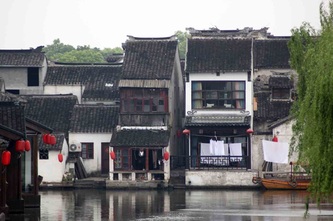



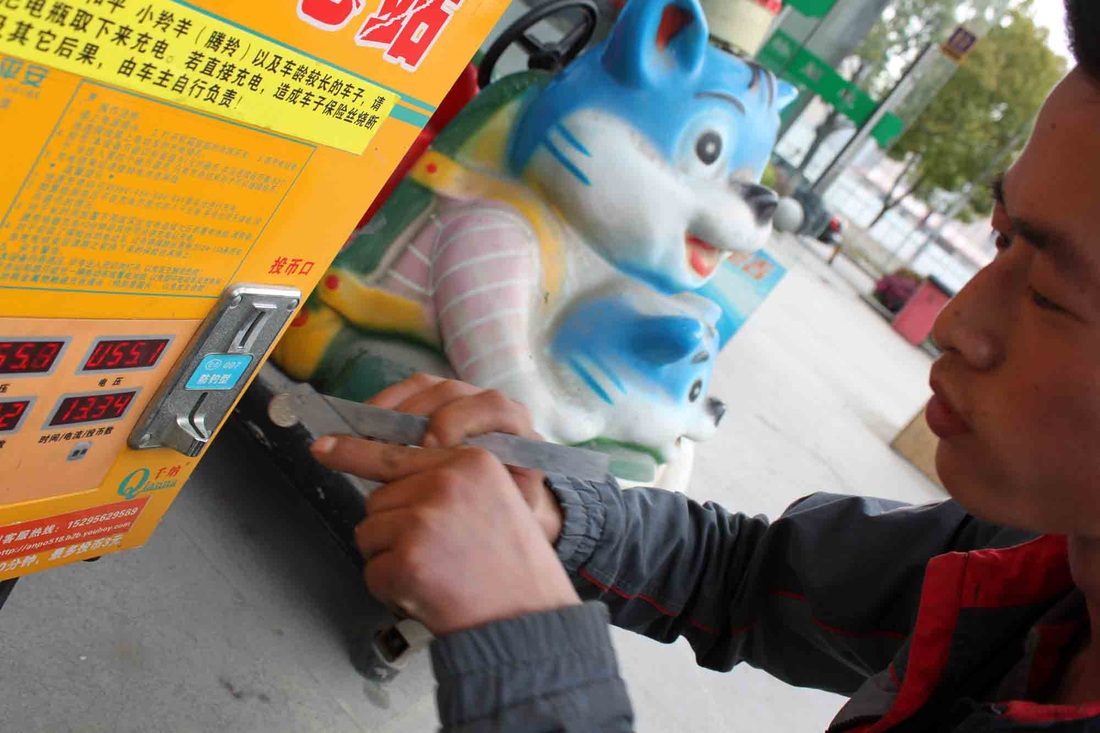

 RSS Feed
RSS Feed







